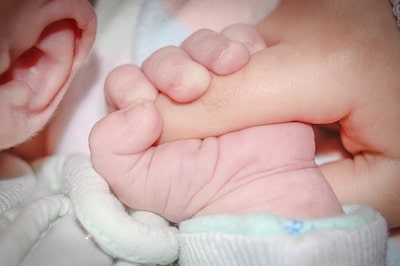
Birth History - Know It!
By Laura Maxson, LM
Celeste Philips died on March 7. I am rerunning this article highlighting the contributions she made to our collective birth history in honor of her impactful life. Rest in Peace.
Celeste Phillips might look like a soft-spoken 80 year-old woman, but she has a powerful voice. She recently spoke before a gathering of midwives, nurses, doulas and others at the Santa Cruz Museum of Art and History, making a living connection between yesterday and today.

Families in our community have certain expectations when they go to the hospital to give birth. They expect to labor and give birth in the same room, on the same bed. They anticipate the baby going straight into their arms and staying with them until they go home. They can choose pain medications if wanted or needed, that will not fog the mind. They can have their partner or support person with them throughout.
Young and future consumers of maternity care don’t always realize that today’s options were shaped by conflicts of yesterday. The “Birth Happens” Midwives @ the MAH Pop-Up exhibit provided many opportunities to learn about and experience birth history. During the three-hour event in May, kids crawled through the “get born” tunnel, par- ents added stickers to the county map of birth locations, folks laughed as they sat on the birth stools, and were surprised by all the hospitals in the county that have come and gone. First-hand accounts of childbirth by early residents were featured on large displays focused on the changing custom, places and culture of childbirth and midwifery in Santa Cruz County. The displays took viewers through Native American traditions, and the history of early immigrant midwives, to the later underground, self-taught midwives of the 1970s and up to today’s licensed and certified nurse midwives practicing in homes and hospitals.
While Celeste Phillips might have projected a little-old-white-haired- lady persona, it was quickly dispelled by her powerful story and contribution to our collective birth history. Reaching into a shopping bag she pulled out a sturdy leather strap. As she buckled the padded strap to her wrist, she told about how these were used on her own wrists and ankles to secure her to the bed when she was in labor.
At the beginning of her nursing career, Ms Phillips applied the same restraints to the laboring women under her care. Strapping laboring women to their beds sounds cruel, but she made it clear that it was part of compassionate nursing care in an era when strong, mind-altering and amnesiac drugs were given routinely. In an effort to protect women from labor pain women were instead drugged out of their right minds, often so out of touch with reality that they needed to be protected from hurting themselves and their babies, by restraining them to bed with leather straps.
There were some in the audience shocked and confused about what was being said. Strapping incoherent women to beds during labor was part of our birthing history, so recent that this woman speaking experienced it, and this was the first they were hear-
ing about it? Women then were promised not only pain-free birth but to also be free from any memories of the process. Family members were not allowed to be with women during labor or birth, but nurses, witnessing the deplorable condition of women in labor, advocated for change.
Ms. Phillips, RN, EdD, literally wrote the book(s) on family centered maternity care. Fathering: Participation in Labor and Birth, came out in 1978. Family-centered maternity care and the move to birthing rooms were the focus of several books, courses and papers over the years.
Change is always on the horizon with birth. Some women feel that the current promise of pain-free birth can unexpectedly come with its own set of restraints in the form of cables and monitors. And while there is full memory of birth, deep inside a la- boring woman’s body there is a different kind of amnesia going on as the hormonal cocktail of labor looses the release of stress hormones and the complimentary release of endorphins. Adding in synthetic oxytocin (Pitocin) IV can stimulate strong contractions, but also can diminish the organic oxytocin released in the brain with labor while saturating oxytocin receptors in the body.
In coming years we will surely see changes and that come from advocacy of parents, nurses, midwives, doctors, doulas and childbirth educators. Get involved and you can be an advocate.
Laura Maxson, LM, CPM, the mother of three grown children, has been working with pregnant and breastfeeding women for over 30 years. Currently she is the executive director of Birth Net- work of Santa Cruz County and has a homebirth midwifery practice. Contact her at [email protected] or [email protected]


You May Also Like

Christmas in July (and April, May, June, etc.)
April 1, 2019
Living a Dream: La Selva Beach Native Finds Career in Theme Park Industry
April 1, 2019

